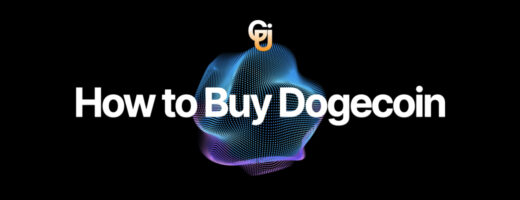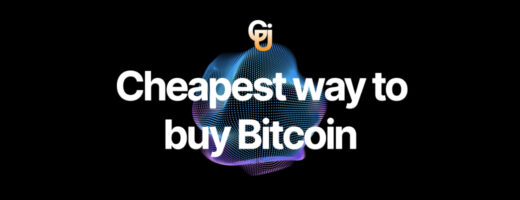NFTs are cryptographic assets on a digital ledger called the blockchain. NFTs contain unique identification codes and metadata which distinguish them from each other. The acronym of Non-fungible Token is NFT.
However, like cryptocurrencies, you cannot trade or exchange them equivalently. This makes them different from fungible tokens like cryptocurrencies, which are identical to each other. Hence, bitcoins and altcoins are used for medium size commercial transactions.
- What Is Fungibility?
- What are the Characteristics of NFTs?
- Brief History of NFTs
- Colored Coins
- Counterparty
- CryptoPunks
- How do NFTs work?
- Important standards for non-fungible tokens (NFT)
- ERC-721
- ERC-1155
- How to Transfer a Non-Fungible Token
- Advantages of NFTs
- Top NFT Projects
- NFT examples
- FAQ:
- ❓ Why are NFTs being valued?
- ⚡ Why are NFTs worth millions of dollars?
- 🏅 Can you buy NFTs with cryptocurrencies?
- 🚀 What is the difference between NFT and Internet today?
What Is Fungibility?
Fungibility is the ability that helps to exchange an asset with a similar asset without losing its value. It defines an asset’s characteristics, like divisibility and value.
For example, one Bitcoin is always equal to another Bitcoin, just like one dollar is equivalent to another dollar. For example, if you lend your friend a $20 note, he/ she does not need to repay that money with the same $20 note – any $20 note will do.
Nonfungible things are not interchangeable and have unique properties. This makes them drastically different, even though they may look similar to each other.
There are several examples of nonfungible items in the real world, such as drama event tickets, paintings, etc. For example, two paintings may look similar, but they may have different levels of rarity. Similarly, front row tickets of theatre are much more valuable than tickets for the back row.
What are the Characteristics of NFTs?
Non-fungible tokens are immensely powerful tokens that allow flexible methods to represent non-fungible assets on a blockchain.
The main characteristics of NFTs are:
- Unique: NFT tokens contain code information that describes each Token’s property that makes it unique from other tokens.
It is a piece of digital art that might have coded information about pixels. For example, tokenized in-game items store details like which player owns which item and its other attributes. - Traceable: All the Non-Fungible Tokens (NFT) have a record of transactions in the blockchain from its creation, including every time it changed hands. That means each Token is verifiably authentic. This is particularly important for owners and potential buyers of tokens.
- Rare: To make non-fungible tokens attractive for buyers, it should be limited. This makes the assets more desirable for a longer period, and also, the supply should not exceed demand.
- Indivisible: NFTs can’t be transacted as fractions of a whole. Just like once cannot purchase half of a concert ticket or trading card. Moreover, you cannot split non-fungible tokens into smaller denominations.
- Programmability: Like all traditional digital assets and tokens built on smart contract blockchains, NFTs are also programmable.
Brief History of NFTs
NFT tokens have been around for a long time. After Bitcoin was launched in 2009 and the initial explosion in token types like Ethereum, Ripple, Litecoin, etc., many people were looking to innovate on blockchain technology to create newer and more powerful tokens.
Here is a brief history of NFTs:
Colored Coins

The earliest non-fungible tokens were colored coins which Yoni Assia first invented in March 2012. These were just small Bitcoin units called satoshi that were “colored” with specific attributes developed using Bitcoin’s scripting language. In this way, satoshi (smallest portion of bitcoin) could represent any asset you can imagine.
Counterparty

Counterparty: It was founded in 2014. It was built on the idea of colored coins to issue non-fungible, and semi-fungible tokens called Counterparty, which supports many features to allow robust asset creation and trading platforms.
In the year 2015, the mobile game Spells of Genesis became the first company to issue in-game assets onto any blockchain. At that time, Force of Will was the fourth most popular trading card game in USA, behind household names such as Magic: Pokémon ,The Gathering, , and Yu-Gi-Oh.
However, blockchain-based game assets would continue to emerge. The major innovation came in 2016 when people started issuing limited edition Rare Pepes on Counterparty, based on the popular meme character Pepe the Frog.
CryptoPunks

John Watkinson and Matt Hall in June 2017 created CryptoPunks. It was one of the first non-fungible tokens on the Ethereum blockchain. The project was developed by the American studio Larva Labs.
CryptoPunks founders allowed anyone to claim the Punks for free. Different Punk types and attributes have different rarities and certain combinations of rare or desirable traits, which is certainly valuable.

CryptoKitties was founded in October 2017. It was a virtual game that allowed players to breed, raise, and trade virtual cats with unique genomes, which influenced their appearance.
CryptoKitties have now begun to rise exponentially in value, with one CryptoKitty is equal to 600 ETH. The project made appearances on mainstream media everywhere, which includes CNN, CNBC, and the Financial Times.
How do NFTs work?
NFTs are also known as immutable tokens that use Blockchain infrastructure. With the help of this technology, digital storage of all visual, written, and audio works can be achieved. Many NFT tokens are part of the Ethereum blockchain. Ethereum is a currency like Bitcoin and Litecoin as well as an infrastructure to launch your own Blockchain projects. Ethereum also supports NFTs.
NFT has metadata processed with a cryptographic hash function, an algorithm that computes a unique string of letters and numbers. NFTs also help you to create asset interoperability across numerous platforms. Also read – How to Mine Ethereum
Important standards for non-fungible tokens (NFT)
Multiple frameworks across multiple networks exist for the creation and issuance of non-fungible tokens. NFTs are interoperable, which means that they can be exchanged or traded across different exchanges with ease.
Here are some important NFT standards:
ERC-721
ERC-721 is a widely used token standard originally proposed in 2017 and written in Solidity(a programming language) on the Ethereum blockchain. It has the highest standard that helps you to create non-fungible tokens for digital collectibles.
ERC-1155
ERC-1155 is an improved token standard that enables smart contracts to facilitate fungible and non-fungible tokens. This token standard helps identifiers represent multiple classes of assets.
How to Transfer a Non-Fungible Token
You can transfer non-fungible tokens in the same way as cryptocurrencies. Some of them may vary in the degree by which they can be transferred and traded. Most NFTs can be traded within their existing game or created platform. Blockchains help ownership and trading of NFTs easily on open marketplaces.
The blockchain’s open marketplace style helps non-fungible tokens to be transferred in marketplaces. Example in auctions or placed for sale in exchange for cryptocurrency. Blockchain technology creates a digital record of each transaction for the non-fungible asset.
Advantages of NFTs
Advantages of NFTS are:
- They are transferable: Unlike exchange-traded cryptocurrencies, NFTs can be bought or sold on special marketplaces. However, their value depends on their uniqueness.
- They are authentic: Non-fungible tokens are powered by Blockchain technology that makes NFT genuine. Therefore, it is almost impossible to create counterfeits with a decentralized and immutable ledger.
- Preserve ownership rights: NFT uses decentralized platforms where no owner can change the data once it is programmed.
Top NFT Projects
Here are some top NFT Projects:
- OpenSea : It is one of the famous marketplaces for NFT art and collectibles. This platform has listed items ranging from ENS to virtual land or pets. This marketplace allows you to purchase using several virtual currencies like ETH and DAI.
- Async.Art : Async is a non-fungible token artwork marketplace. Apart from buying and selling your NFT, you can also create your own NFT tokens. The platform also allows art creators to easily define their artwork’s appearance and behavior.
- Ethereum Name Service : ENS is a domain name service project that came to life in mid-2017. The ETH domain names are NFTs that use Ethereum’s ERC-721 standard and can be traded on NFT marketplaces.
- Decentraland : It is one of the leading marketplaces that focused on a distributed virtual world. On this site, participants can buy virtual land. They can also create virtual scenes, artworks, etc., with the help of a simple Builder tool and participate in events to win prizes. Moreover, each “inhabitant” has a special identifying digital passport.
- Tezos : It is an open-source blockchain platform for digital assets and applications. It helps you create smart contracts and build decentralized applications that cannot be censored or shut down by third parties.
NFT examples
The NFT world is relatively new. In theory, the scope for NFTs is anything unique that requires provable ownership.
Here are some examples of NFTs that exist today to help you get the idea:
- A unique digital artwork.
- An in-game item.
- A digital collectible.
- A domain name.
- A ticket or a coupon that gives you access to an event.
FAQ:
❓ Why are NFTs being valued?
NFT provides the ability to securely value, purchase, and exchange digital art with the help of a digital ledger. NFTs started in online gaming. Later Nike patented it to use for CryptoKicks.Next, Christie’s auction embraced the NFT valuation of a digital art price.
NFTs are created by uploading files, like digital artwork, to an auction market. These types of tokens are not mutually interchangeable, which makes them more like “collectible” items.
⚡ Why are NFTs worth millions of dollars?
Every NFT is different and unique as their unique qualities and authenticity characterize them. These tokens are easily verifiable and can always be followed back to the original creator. Moreover, they can’t be duplicated. Authenticity plays a major role in the rise of NFTs. If you want to know about how to buy the best NFT tokens, here’s a list of the Best NFT to Buy
🏅 Can you buy NFTs with cryptocurrencies?
Yes, you can buy NFTs with cryptocurrencies like Ethereum, Litecoin, Bitcoin, etc.
🚀 What is the difference between NFT and Internet today?
Here, some important differences between NFT and the Internet today.
| An NFT Internet | The Internet today |
|---|---|
| NFTs are digitally unique. Therefore no two NFTs are the same. | A copy of a file, like a .mp3 or .jpg, is the same as the original. |
| Every NFT should have an owner. | It has a ownership records of digital items are stored on servers controlled by institutions. |
| Content creators can sell their work anywhere and can access a global market. | Creators depend upon the infrastructure and distribution of the platforms they use. |
| Creators can retain ownership rights over their work and claim resale royalties. | Platforms, such as music streaming services, keep the majority of profits from sales. |




